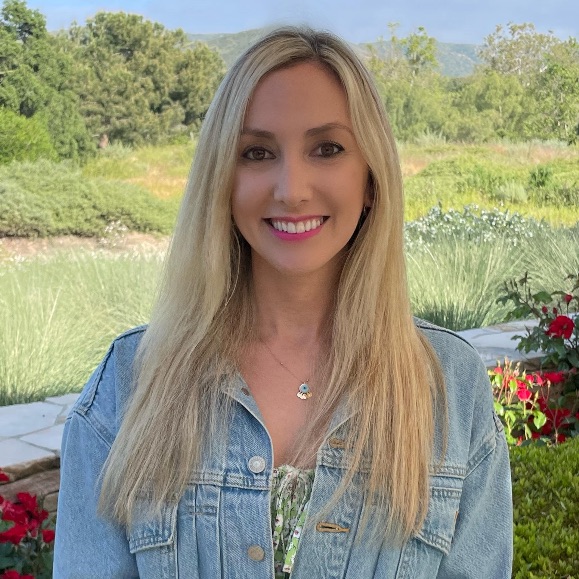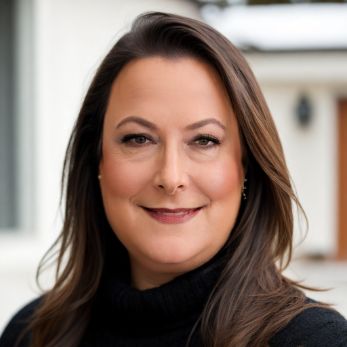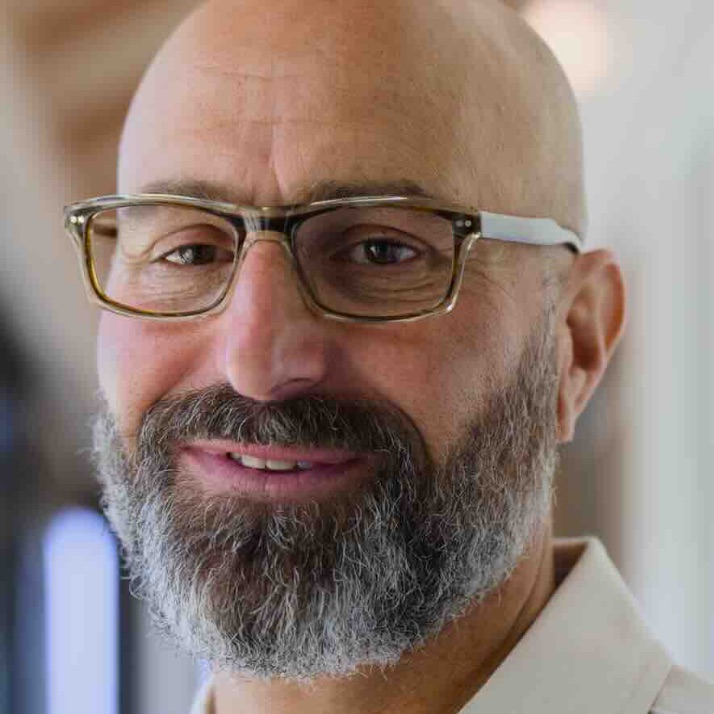A Step-by-Step Guide to Social Anxiety Therapy in San Diego
Starting social anxiety therapy in San Diego often begins with recognizing patterns like avoiding social situations, dreading meetings or classes, or feeling intense self-consciousness, and deciding it’s time to get support. Use MiResource’s directory to research qualified local therapists who specialize in social anxiety, filtering for in-person or virtual care and neighborhoods like Hillcrest, La Jolla/UTC, North Park, or Mission Valley. Once you find a good fit, schedule an initial consultation to discuss goals, insurance or self-pay rates, and logistics such as parking (e.g., validated garages downtown/Gaslamp, free lots in Mission Valley, or metered street parking in Hillcrest). Attend your first session ready to share your history and triggers; your therapist may suggest CBT, exposure strategies, or skills training tailored to your comfort level. Together, you’ll create a treatment plan and set a follow-up cadence, with virtual sessions as a flexible option if traffic on I-5 or I-805 is a barrier.
As you continue, commit to practicing skills between sessions—such as gradual exposures like ordering coffee in North Park or attending a small meetup in Pacific Beach—and track progress with your therapist. If transportation is a concern, consider trolley-accessible offices along the UC San Diego Blue Line (Old Town to UTC) or bus routes serving Chula Vista and Clairemont; confirm bike storage or elevator access if needed. Many clinics offer evening hours and telehealth to fit around work or school, and some provide sliding-scale fees. Revisit goals regularly, adjust the plan as challenges arise, and celebrate small wins to maintain momentum. MiResource’s up-to-date profiles make it easy to compare specialties, languages, and availability so you can find supportive, evidence-based care close to home.
Guide to Accessing Local Organizations for Social Anxiety Support in San Diego
Local organizations in San Diego offer practical, culturally aware support for Social Anxiety through peer-led groups, classes, and referrals to trusted services. They can help you build coping skills, connect with others who understand, and find low-cost or free resources close to home. Groups from nonprofits and community centers provide safe spaces to practice social skills and reduce isolation. Many also offer virtual options, making it easier to start at your own pace while staying connected to the San Diego community.
- Identify resources:
- Explore NAMI San Diego & Imperial Counties for classes and support groups:
- Check DBSA San Diego for peer-led mood and anxiety support:
- Review County of San Diego Behavioral Health Services programs and directories:
- Look for community programs at San Diego Public Library branches:
- Consider skills groups/workshops at UC San Diego Center for Mindfulness:
- Contact and ask:
- Use listed emails/phones or interest forms; for help navigating, call the San Diego Access & Crisis Line 24/7 at 888-724-7240 or visit https://up2sd.org/.
- Ask about Social Anxiety–focused groups, eligibility, cost, language options, virtual/in-person formats, and waitlists.
- Prepare and engage:
- Confirm dates, location, and what to bring; set a small goal for your first session (e.g., introduce yourself once).
- Attend a first meeting, observe at your comfort level, and follow up with facilitators about next steps.
- Stay connected:
- Try 2–3 sessions before deciding; combine peer groups (NAMI, DBSA) with skills-based classes (UC San Diego) and community events (libraries) to build consistency.
Guide to Using Emergency Services for Social Anxiety in San Diego
If Social Anxiety suddenly escalates—such as intense panic with chest pain or trouble breathing, inability to function or care for yourself, thoughts of self-harm or suicide, or substance use to cope—it may be necessary to use emergency services. Seek help immediately if you or someone else is in danger, you can’t de-escalate symptoms on your own, or support from friends/family isn’t enough. Getting urgent help in San Diego can stabilize the crisis and connect you to follow-up care.
1) Identify a crisis
- You’re experiencing overwhelming fear, panic attacks that won’t subside, inability to leave a safe space for essential needs, or thoughts of self-harm/suicide.
- If there’s immediate danger, call 911.
2) Contact local crisis support (24/7)
- Call or text 988 (988lifeline.org) for immediate counseling and safety planning.
- San Diego Access & Crisis Line: 888-724-7240 (24/7, multi-language; can dispatch Mobile Crisis Response Teams). Info.
- If safety is urgent, call 911 and request a Psychiatric Emergency Response Team (PERT) when available.
3) Request in-person crisis response
- Mobile Crisis Response Teams (MCRT) can come to you for behavioral health crises without law enforcement when appropriate; request via 988 or 888-724-7240. County info.
4) Go to the nearest emergency room if needed
- UC San Diego Medical Center – Hillcrest ER, 200 W Arbor Dr, San Diego, CA 92103. Hospital: 619-543-6222.
- UC San Diego Health – La Jolla ER (Jacobs Medical Center), 9300 Campus Point Dr, La Jolla, CA 92037.
- Scripps Mercy Hospital San Diego ER, 4077 Fifth Ave, San Diego, CA 92103. 619-294-8111.
- Sharp Memorial Hospital ER, 7901 Frost St, San Diego, CA 92123. 858-939-3400.
What to expect: brief triage and safety assessment, help to manage panic and breathing, evaluation by a mental health professional, and a plan for follow-up care and resources in San Diego. Bring ID, medications list, and emergency contacts if possible.
Guide to Using Parks and Green Spaces in San Diego to Support Mental Health
Spending time in nature can lower stress, improve mood, and boost focus—benefits that are especially helpful for people managing Social Anxiety. Gentle exposure to outdoor settings gives you space to reset while practicing social skills at your own pace. San Diego’s wide variety of parks and trails makes it easy to start small and build confidence. Even short, regular visits can create a calming routine that supports overall mental health.
Step 1: Find the right spot. Try quieter areas like Balboa Park’s Alcazar Garden or Palm Canyon, coastal trails at Torrey Pines State Natural Reserve, shaded paths at Los Peñasquitos Canyon Preserve, lakeside loops at Lake Murray, or open lawns at Kate Sessions Park and Mission Bay Park. For scenic, low-key walks, consider Sunset Cliffs Natural Park, Presidio Park, or Mission Trails Regional Park.
Step 2: Start small and pick calm times. Visit early morning or late afternoon on weekdays, choose short, familiar routes, and plan a clear start/finish point (e.g., the Visitor Center loop at Mission Trails or the Torrey Pines Guy Fleming Trail). Have a simple goal like 10–20 minutes of walking or sitting in a peaceful spot.
Step 3: Prepare for comfort and confidence. Bring water, sun protection, and comfortable shoes; download an offline map; use headphones or a calming playlist; and carry grounding tools (breathing apps, fidget). Check parking or MTS access for Balboa Park, Liberty Station NTC Park, and Mission Bay; consider inviting a trusted friend or pet for support.
Step 4: Make the most of each visit. Practice slow breathing, notice five things you can see/hear/feel, and take brief breaks on benches or overlooks. Gradually add time or try new locations like Cabrillo National Monument tidepool area or San Dieguito River Park. Join low-pressure activities such as ranger-led walks at Mission Trails or casual meetups at Liberty Station, and note what felt good to build a steady San Diego nature routine that supports Social Anxiety recovery.
Your Guide to Understanding Social Anxiety
Social Anxiety is a common mental health condition marked by an intense fear of being judged, embarrassed, or rejected in social situations. It’s more than shyness; it can cause physical symptoms like blushing, sweating, trembling, and a racing heart, as well as mental loops of worry or self-criticism. People may avoid conversations, meetings, or events, or endure them with significant distress. These challenges can affect school, work, and relationships, making everyday interactions feel overwhelming. Knowing that Social Anxiety is common and real can be the first step toward relief.
Understanding Social Anxiety matters because recognizing the signs helps you take compassionate, practical steps to feel better. Effective supports exist, including therapy such as CBT (a skills-based approach that helps reframe unhelpful thoughts), gradual exposure to feared situations, and stress-reduction techniques. Building routines, practicing self-kindness, and connecting with trusted people can also make a meaningful difference. With the right tools and support, Social Anxiety is manageable, and progress often starts with small, doable changes. Reaching out for help is a strong, hopeful step toward well-being.
What Social Anxiety Is and How It’s Defined
Social Anxiety is a strong, persistent fear of being judged, embarrassed, or rejected in social situations, like meeting new people, speaking up, or being watched while doing something. The American Psychiatric Association and the National Institute of Mental Health describe it as a condition that causes intense worry and avoidance that can interfere with work, school, and relationships. You might hear it called social anxiety disorder or social phobia—terms that simply mean the fear is frequent, overwhelming, and hard to control. If you have Social Anxiety, you’re not alone, and with understanding and support, it can get better.
Who Social Anxiety Can Affect
Social Anxiety can affect people of all ages, genders, and backgrounds, and you’re not alone if everyday moments feel tough. While it can be especially common among teens and young adults, people who’ve experienced bullying, those in high-pressure or public-facing jobs, and LGBTQ+ individuals may notice it more—yet anyone can experience it. It might show up when speaking up in class, meeting new coworkers, ordering at a café, or attending a neighborhood event. Whatever your story, Social Anxiety is common and treatable, and support is available.
Why It’s Important to Learn About Social Anxiety
This section outlines common signs of Social Anxiety so you can spot concerns early and feel more in control. It’s meant to build awareness—not alarm—and to encourage gentle, timely steps toward support if these signs feel familiar.
- Worrying a lot before social plans, meetings, or calls, sometimes for days
- Avoiding or delaying everyday interactions (answering the phone, speaking up, making small talk)
- Strong fear of being judged, embarrassed, or saying “the wrong thing”
- Physical reactions in social settings, like a racing heart, blushing, sweating, shaky hands, or an upset stomach
- Mind going blank, trouble finding words, or replaying conversations afterward
- Keeping little eye contact, staying on the edges of groups, or leaving early to feel safe
What People Want to Know about Social Anxiety
- How do I know if I’m ready to start therapy for Social Anxiety?
You may be ready to start therapy for Social Anxiety if you notice it’s affecting your daily life—like avoiding social events, work or school tasks, or relationships. Feeling motivated to make changes, even if you’re nervous, is a strong sign you’re ready to get support. If you’re curious about new coping tools or tired of managing Social Anxiety on your own, therapy can help. Trust that taking this first step is a positive move toward relief and confidence. - What should I look for when choosing a therapist who treats Social Anxiety in San Diego?
Look for a therapist in San Diego with clear experience treating Social Anxiety and outcomes they can describe. Ask about their therapeutic approach—evidence-based methods like CBT and exposure therapy are proven helpful for Social Anxiety. Confirm credentials and training (e.g., licensed LMFT, LCSW, Psychologist) and that they offer options that fit your life, like in-person or telehealth and insurance compatibility. Trust your comfort and connection in the first session; feeling understood is a strong sign you’ve found the right San Diego therapist.
- What are evidence-based therapies to treat this Social Anxiety?
Common evidence-based treatments for Social Anxiety include Cognitive Behavioral Therapy (CBT), which helps you identify anxious thoughts and practice more balanced thinking and new coping skills. Exposure therapy, often part of CBT, gently and gradually helps you face feared social situations so confidence grows over time. Medications like SSRIs can reduce Social Anxiety symptoms by helping rebalance brain chemicals, often used alongside therapy. Many people do best with a combination of therapy and, when needed, medication to support steady progress. - How long does therapy for Social Anxiety usually take?
Therapy for Social Anxiety varies based on severity, the type of treatment (like CBT or group therapy), your goals, and individual progress. Many people notice improvement in several weeks to a few months, though some benefit from longer-term care; timelines aren’t guaranteed. Consistency and commitment between sessions, including practicing skills, are key to results. In San Diego, options range from brief, skills-focused Social Anxiety programs to ongoing therapy for more complex needs.
- Can I combine therapy for Social Anxiety with medication?
Many people with Social Anxiety find that a combination of therapy and medication offers stronger, more lasting relief than either approach alone. The best treatment plan is personal, so decisions should be made with a qualified professional who understands your history and goals. In San Diego, effective care often involves close coordination between therapists and prescribers to ensure your treatment stays aligned and responsive. If you’re exploring options in San Diego, a collaborative team can help you feel supported while adjusting treatment as your needs evolve.
- How much does Social Anxiety therapy typically cost, and will insurance cover it?
Social Anxiety therapy costs vary by location, provider type, and session length—expect higher rates with specialized clinicians, longer sessions, or private practices in San Diego. Insurance may cover part or all of treatment if the therapist is in-network; out-of-network benefits, HSAs/FSAs, and employer EAPs can also reduce costs, and many clinicians offer sliding-scale fees. In San Diego, community mental health centers, university training clinics, and nonprofit agencies may provide low-cost or group options for Social Anxiety. To check coverage, call your insurer with the therapist’s details to confirm in-network status, copays/coinsurance, deductibles, session limits, and any preauthorization requirements. - What can I do between therapy sessions to help manage my Social Anxiety?
Between sessions, set small, specific social goals (like saying hello to a barista or asking a coworker a simple question) and track your wins to gradually reduce Social Anxiety. Practice brief daily skills—slow breathing, grounding, and challenging “mind-reading” thoughts—and role‑play tricky conversations to build confidence. Create a graded exposure ladder for common San Diego situations (ordering at a busy café, attending a meetup, visiting a library program) and work up step by step. For extra support, use San Diego community resources like low‑pressure clubs or volunteer events, and pair them with self‑compassion and consistent routines to keep progress going with Social Anxiety.













